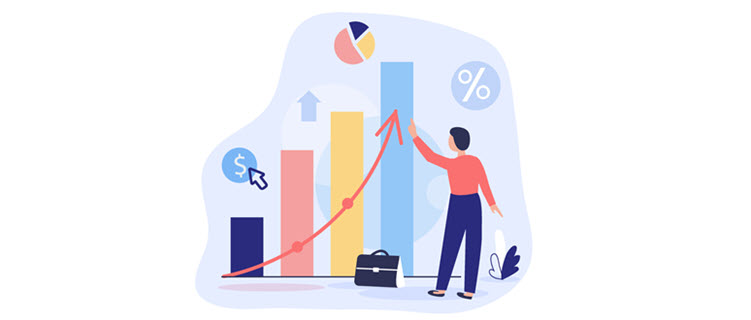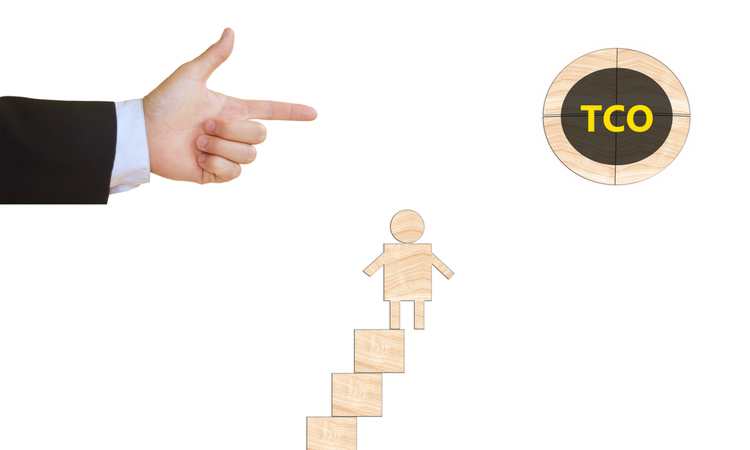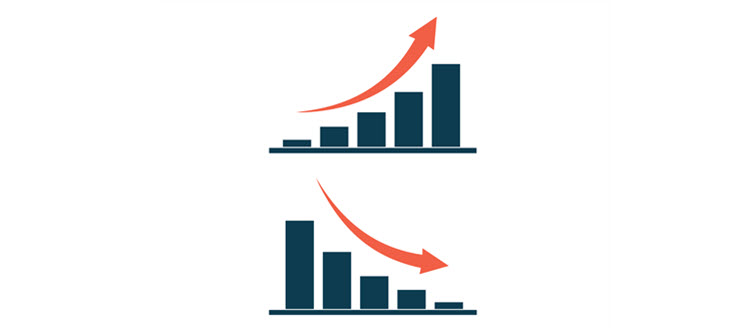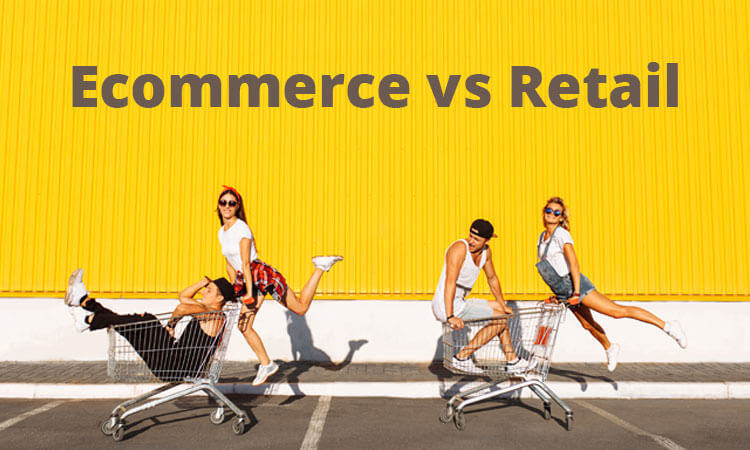Starting a business is easier now than it has been before. The only issue could be whether you launch a physical store or an online store. In other words, ecommerce vs. retail. Historically, the only choice to make back then was what product to sell.
To help decide, it’s smart to weigh both sides and access the benefits and drawbacks of each option. Ecommerce and retail are often considered similar. However, if we think of retail as a simple brick-and-mortar, the difference is evident. Therefore, to understand who wins the battle of ecommerce vs. retail, we must look at the two, side by side.
Ecommerce vs Retail: What is the Difference?
The main difference between an ecommerce and a retail store location is that shopping and selling are done online on an ecommerce and offline in a brick-and-mortar store. A retail store also has a physical location.
Ecommerce Definition
Merchants make ecommerce sales through online platforms such as ecommerce websites. Purchases of products and services are made online by consumers and businesses. These customers then pay for the purchase online by credit card or other payment methods. Third-party shipping companies handle shipping, with an additional added to the final cost of the product.
Retail Definition
Retail sales refer to the process of consumers and businesses purchasing products or services offline. This process includes the sale of finished goods that make their way from the supplier to the buyer. These sales take place in a physical store, also known as brick-and-mortar. Consumers can physically touch and see the product they are about to purchase.
Comparison
It’s not easy to decide which business option to opt for, especially after observing the growth in both sectors. To make this choice more comfortable, we've compared the two by aspects we deemed most important for your decision-making process. These include the initial investment, total cost of ownership, business operations complexity, risks, and limitation, profit opportunity and overall shopping experience of the customers.
| Ecommerce | Retail | |
|---|---|---|
| Initial Investment | Low | Medium/High |
| Total Cost of Ownership | Low/Medium | Medium/High |
| Business Operations Complexity | Low/Medium | High |
| Risks and Limitations | Medium | Medium/High |
| Profit Opportunity | High | Medium |
| Shopping experience | Shopping available 24/7, no need to visit stores, easier to compare prices. | Inspecting products in person, no waiting for delivery, hands-on control. |
Initial Investment
Retail
If you opt for a retail store, you'll need to find a location and obtain the necessary government and business resources, including paying licensing fees, getting an Employer Identification Number (EIN) for tax purposes, and having a bank account.
You’ll also have to decide if you want to lease or buy a commercial space. The next expense will be your facilities and staffing. Before you can open your doors, you’ll need staff. Hiring staff means not only their paychecks but also reporting on them and paying governmental employer taxes.

Finally, you will need your starting inventory; this is the minimum amount of stock you’ll need before you invite customers into your store.
Ecommerce
Start-costs are relatively low for ecommerce's, with the primary investment being the website to host your business. Ecommerce startups need to pay for company formation, domain, hosting, web development, marketing, and sales tools, and most likely, some advertising budget.
When we consider inventory, the main advantage of ecommerce is that you can start an ecommerce business without any inventory. That depends on what you use – order fulfillment or dropshipping.
Inventory is necessary if ecommerce business is using order fulfillment, meaning you are manufacturing the product you are selling. In that case, you will send batches of your products to services such as Fulfillment by Amazon, Rakuten, ShipBob, FedEx, etc. They will take care of all logistics for you – from proper storage and packaging, over cost-effective shipping and monitoring inventory levels, to delivery tracking and returns management.
However, Dropshipping your inventory is NOT necessary because you are selling products manufactured by someone else. In that case, drop shipping platforms such as AliExpress, Oberlo, and Salehoo take care of production, storage, inventory levels, and shipping to your customer.
What makes many businesses opt for an ecommerce business is the fact that there can be virtually no staffing costs. Although you can employ extra staff to help manage the site, it’s equally possible to manage these aspects of the business yourself.
Note: Learn how to build an ecommerce website using WordPress.
Total Cost of Ownership
To fully understand the costs that go into a business, we have to consider not only the initial investment but also the variable costs that follow.
Retail
There are various things to factor into financial estimates on your total cost of ownership:
- Business entity formation
- Annual insurance
- Attorneys
- Accounting
- Marketing costs
- Cash Register / POS terminal
- Bank Account
- Storefront rental costs
- Business owners’ insurance
- Workers’ salaries

Ecommerce
An ecommerce store has some of the following costs associated with it:
- Ecommerce website maintenance by developer
- Domain name
- Hosting
- Marketing and Sales tools
- Paid add-ons and plugins
- Advertising campaigns: Google, Facebook, Instagram, YouTube, etc.
- Payment Processor
- Taxes
- Accounting
These expenses are applicable in case you're doing most of the work and have only a freelance developer as a part-time employee. In case your ecommerce store expands, you might want to employ more people and, in that case, your TCO will increase for following line items:
- Advertising campaigns management
- Customer support
- Various sales and marketing tasks
Business Operations Complexity
Retail
The brick-and-mortar model is a little more complicated. It came with dynamic seasonal changes in both supply and demand and planned and unplanned promotions. While it's simpler to update a product portfolio online, offline stores need to organize their time, suppliers, and store for each seasonal shift.
When you have one-on-one contact with your customer, it provides numerous ways to build customer loyalty. Your staff needs to be pleasant, knowledgeable, and helpful to give a lasting impression to keep customers coming back.

There is also the aspect of internal communications between you and the staff, amongst themselves and you and suppliers. Internal communications need to work in harmony to ensure balance.
Finally, changes in technology mean that your business will always have to be changing and adding new technological features to ensure you're keeping up with your competitors.
Ecommerce
Ecommerce complexity considers aspects such as inventory management. If you don’t have a warehouse to store your products, you’ll need to rent one or opt for dropshipping.
Buying from an ecommerce store, your customers will expect their product to arrive on time and intact, requiring a speedy and efficient order fulfillment and shipping system.
Finally, not having direct contact with your customers means that you’ll have to use methods such as analytics, tracking, and surveys to keep up with customer likes and changes in taste.
Risks and Limitations
Retail
We are all familiar with the risks of a brick-and-mortar with the most common being theft of physical products.
When it comes to products, there is the factor of transporting products to the store, which can lead to damages to inventory.

The constant changes in technology and new options available on the market means that business must invest in keeping up with their competitors.
Finally, customer satisfaction is the key to any business. Business owners must make sure that they build customer loyalty and give their buyers a reason to keep coming back.
Ecommerce
Security is the leading risk when it comes to ecommerce stores. With technology changing at such an alarming pace, it leaves websites open to hackers and security attacks. Issues arise when there are data breaches. Ecommerce store owners must invest heavily in online security to avoid breaches and credit card fraud. There is also the need for a reliable system, including a robust website hosting, to ensure that the site does not crash.
Finally, not only with credit card fraud but also with shipping customer issues need to be addressed, including having a customer support system to handle customer disputes.
Profit opportunity
Retail
What makes a retail store more profitable than an ecommerce? It's the fact that customer data is safe because customers don't leave their personal information, email, or passwords when shopping.
Customers can physically interact with products and are offered customer service on the spot, making it easier to address customer needs directly. The fact that they can touch and see the product they are going to buy gives them immediate satisfaction.

Finally, there is no need for shipping costs, as customers buy their products directly.
Ecommerce
The most profitable aspect of ecommerce is the unlimited growth it offers to your business. While a retail store is limited to its physical bounds, ecommerce has the freedom to grow and for a lower price. It is also easier to double sales through an ecommerce than retail. Likewise, it's easier to penetrate existing or new markets allowing ecommerce growth.
There are effective ways to attract new customers through offers which combine product and shipping cost:
- Pay for products, get free shipping.
- Get the free product, pay just for shipping
Finally, it's easier to automate sales for up-sells and cross-sales. Payment processors or ecommerce add-ons, or sales automation software such as CRM can help with this.
Shopping experience
Both retail and ecommerce can have certain benefits for shoppers, depending on their preferences and shopping needs.
Retail
Some buyers remain loyal to brick-and-mortar stores for a variety of reasons. In such stores, you can inspect, touch, and try (on) products. This gives you a better insight into the goods you’re buying.
Moreover, you don’t have to wait for the delivery. You simply take the purchased products with you once you’ve paid for the goods.
Buying retail products means avoiding the hassle of returns. If something breaks down or doesn’t work properly from the start, you just take such products and return them to brick-and-mortar stores.
Finally, many buyers still like the folklore around the family weekly shopping: having lunch or coffee at malls, visiting entertainment areas, etc.
Ecommerce
Ecommerce is gaining popularity with Internet users across the globe, due to the numerous features it offers.
Online stores are available 24/7 so that buyers can order goods whenever they want.
Online shopping gives you a valuable chance to compare different prices and find discounts more easily.
People who order products online don’t have to go to brick-and-mortar stores. This saves a lot of time which they can spend in some other ways.
Another advantage of ecommerce over retail shopping is the possibility to find rare products via search queries instead of going from store to store.
Brick and Mortar vs. Online Sales Statistics

Market Size
The ecommerce and retail markets are both growing. The size of the US Ecommerce market in 2020 was $861.12 billion, while the size of the Retail market in the U.S. was $4.04 trillion.
The factors that influence the market size for a product include:
- The type of products or services you wish to provide and sell.
- The demand for those same products/services.
- Policies and taxes concerning the products you wish to sell.
- Transportation and prices.
- Marketing and changes in trends.
- Environmental awareness.
Nevertheless, both are profitable, which means that no matter which you choose, you will have a favorable potential for success.
Ecommerce Trends
To get a better understanding of the market size of ecommerce, we can look at sales figures. The sales in the U.S. for 2020 were a whopping $791.70 billion compared to $598.02 billion in 2019. That’s a 32.4 % growth from the previous year.
The faster growth of ecommerce is due to the shopping convenience it creates, the fulfillment options, omnichannel retailing, and a more comprehensive range of products and shipping options.
Retail Trends
U.S. retail sales rose from $3.78 trillion in 2019 to $4.04 in 2020, which was a 6.9% increase.
Retail is growing slower on the other hand because the offline market is being targeted by ecommerce's and online rivals are fulfilling the needs of customers in these sectors. These include music and video stores. However, retail continues to grow, just at a slower pace.
Conclusion
If you opt for a retail store, you’ll have a more personalized approach to your customers, direct interactions, and more hands-on control.
On the other hand, if you choose to go with an ecommerce store, you won’t have as many expenses, and business operations are more straightforward. The main advantage of ecommerce is global availability and easy scaling.
Finally, you take the best of both worlds and go for Omnichannel retail to provide customers with a seamless purchasing experience from any channel – physical store, ecommerce shop, phone order, mobile app, interactive kiosk, etc.
